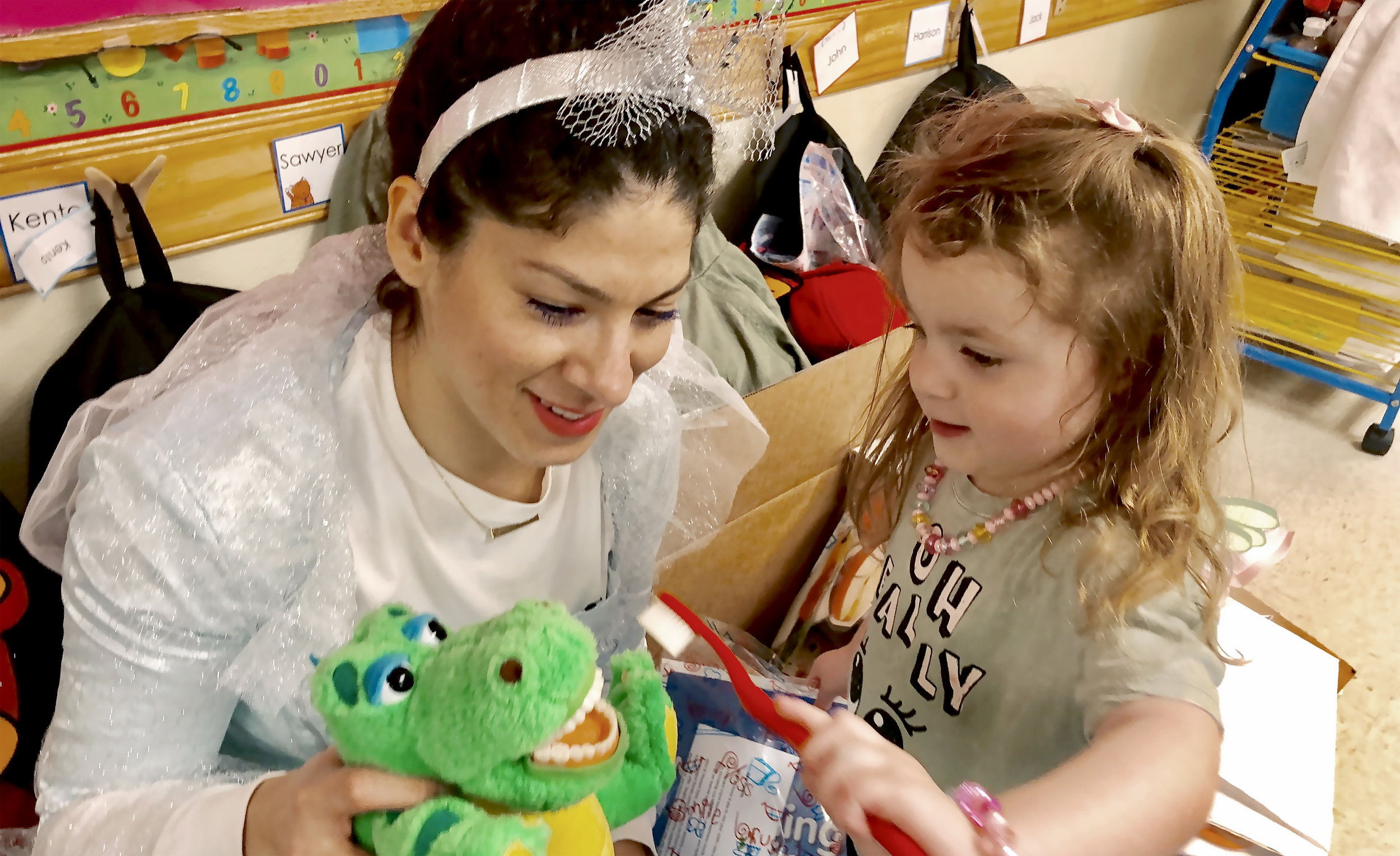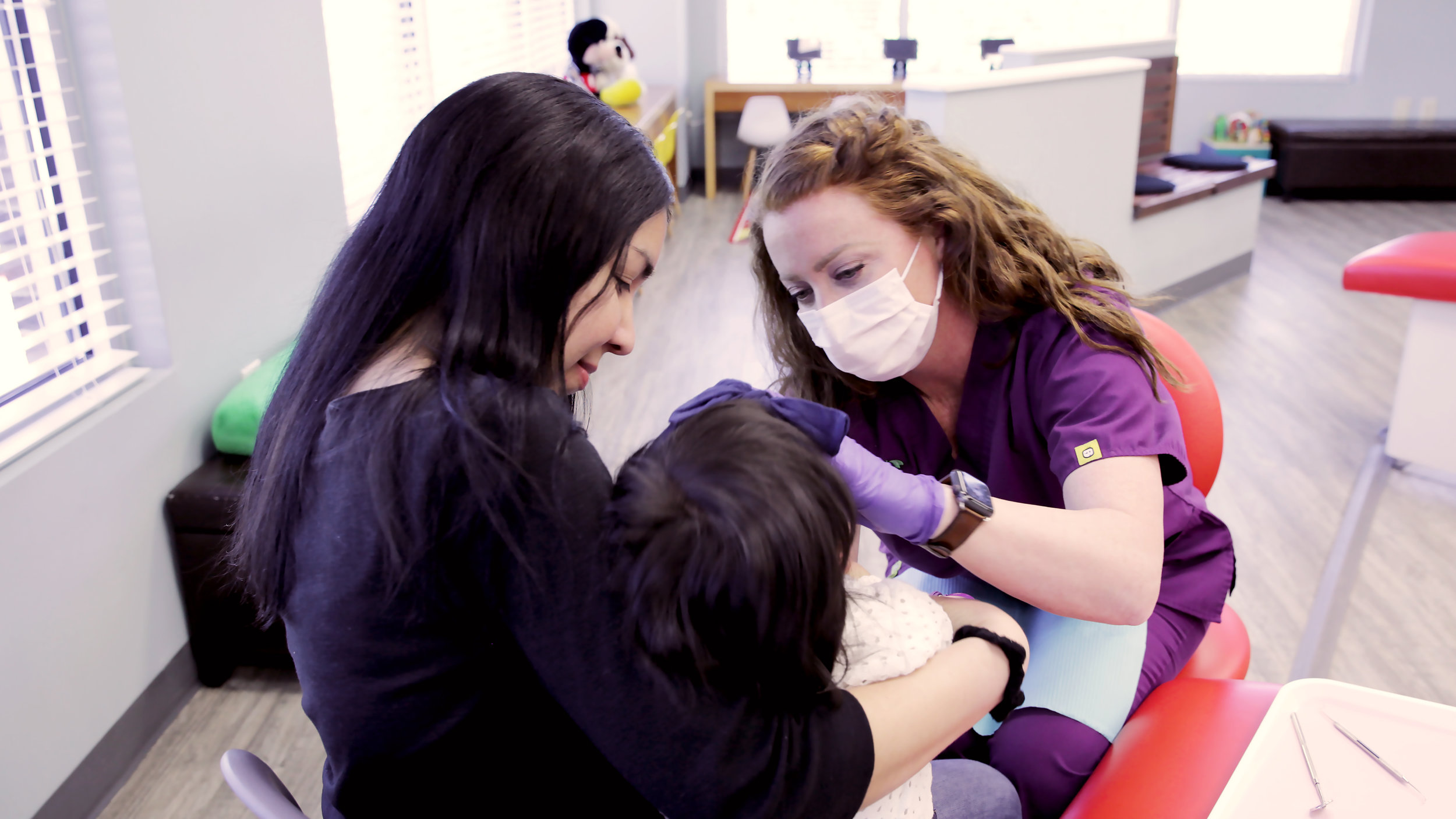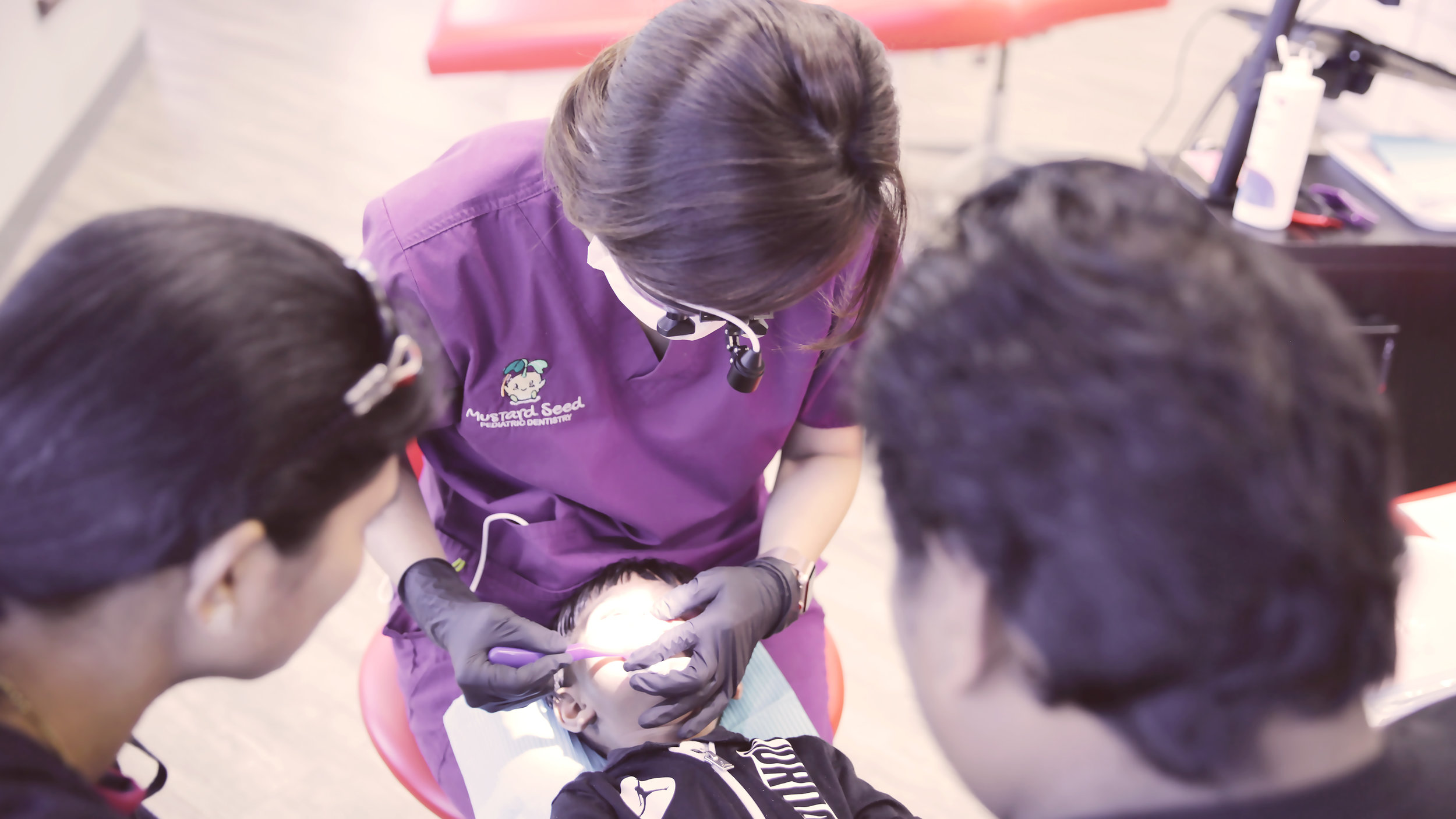FAQ
When should my child first visit the dentist?
The American Academy of Pediatric Dentistry, the American Academy of Pediatrics, and the American Dental Association recommend that you schedule your child's first dental visit once the first tooth erupts or at the latest, by age one. Most babies have their first tooth at 6 months, but because of a variance in age and caries risk, it is recommended that the first visit happens between 6-12 months of age. At your child's first dental visit, your dentist will do an exam to make sure that the oral structures are sound, the teeth are erupting properly, and that there are no decalcifications which may indicate future cavities. Your dentist will also review proper oral health care and diet practices that will minimize caries development, also known as anticipatory guidance. After your initial visit, your child should continue to see the dentist every six months.
Does breast feeding (bottle feeding) cause cavities?
Mothers make an individual decision with their Pediatrician as to what is best for them and their baby. In the first 6 months, feeding should be directed to the child's needs, without concern for the unerupted teeth. After the eruption of the first teeth, children who frequently continue to bottle or breast feed while napping, sleeping, or in between meals past 10 months of age, run the risk of developing extensive tooth decay. Fruit juices, citrus juices and sweetened beverages cause the most damage. Milk can also cause decay especially when taken from a nighttime bottle! Sleeping with a bottle should never be allowed. If the child must sleep with a bottle, dilute your child's milk until the bottle contains only water. If your child has been sleeping with a bottle or has a daytime bottle habit, you should arrange for a pediatric dental examination as soon as possible.
My child doesn't eat much sugar. Why does he have so many cavities?
Parents are advised never to sweeten foods. This will help in the development of better habits and nutrition later on. However, teething biscuits, cereals, and crackers also contain starch that change into sugar in our mouths. Every time your child puts food (starch or sugar)or drink (other than water) in his mouth, the pH level drops for the next 20 minutes. Cavities occur because of decalcification from the acidic environment. Thus, as the child grows older, avoid snacking between meals, especially foods rich in starch and sugar. Sticky, slowly dissolving candies should be avoided and limited to only special occasions. Drinking water in between meals is an effective way to rinse out the acid that develops in our mouths. Avoid sodas, and try to have your child drink milk and non-sweetened juice at meal times.
When do I start using regular toothpaste for my child?
While your child is toothless, wipe his or her gums with a clean wet washcloth after feeding. Once the teeth erupt, brush twice a day with a small smear of toothpaste with fluoride. In order to prevent fluorosis, use a smear of fluoridated toothpaste for children under two, and a small pea-size amount for children over two. It used to be that fluoridated toothpaste was recommended for children above two, but guidelines from the AAPD now indicate that the small amount of fluoride is actually beneficial for your child. In terms of what brand of toothpaste, whatever flavor or character your child choses, as long as they like it, they'll use it.
Why should babies/toddlers not be exposed to fluoride?
Fluoride, in large amounts interferes with the calicification process. Fluoride substitutes itself in place of calcium. In large amounts, (and I'm talking about very high ingestion), it can cause not only fluorosis of the teeth which causes the teeth to be discolored and brittle, it also causes bone deformities. You rarely see it in this country; you usually see the skeletal deformities in third world countries. Fluoride in the appropriate amount though is very beneficial because in areas where there is initial decalcification, it strengthens the enamel. This is why the caries rate decreased dramatically once toothpaste with fluoride was made. It's considered one of the best epidemiological advancement in healthcar





